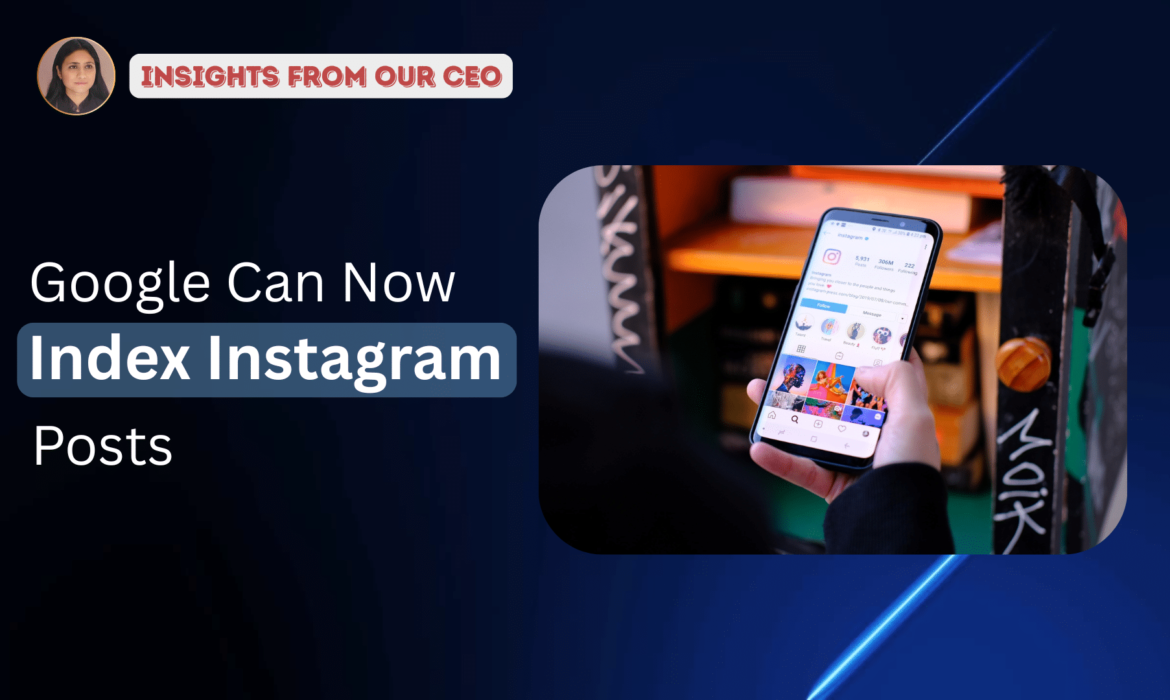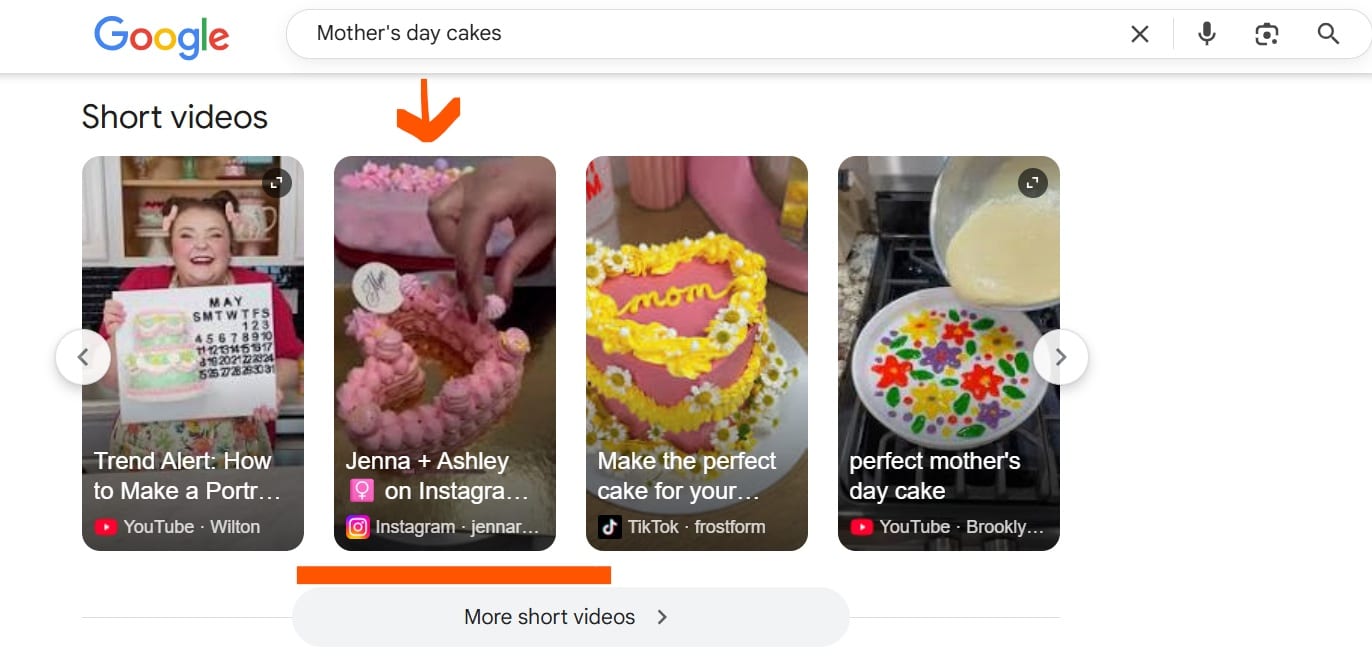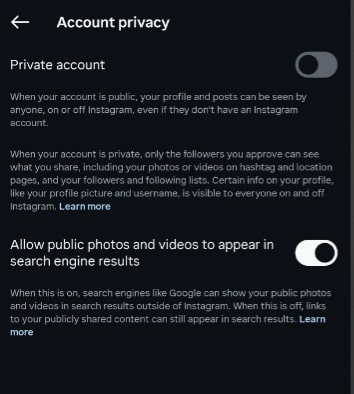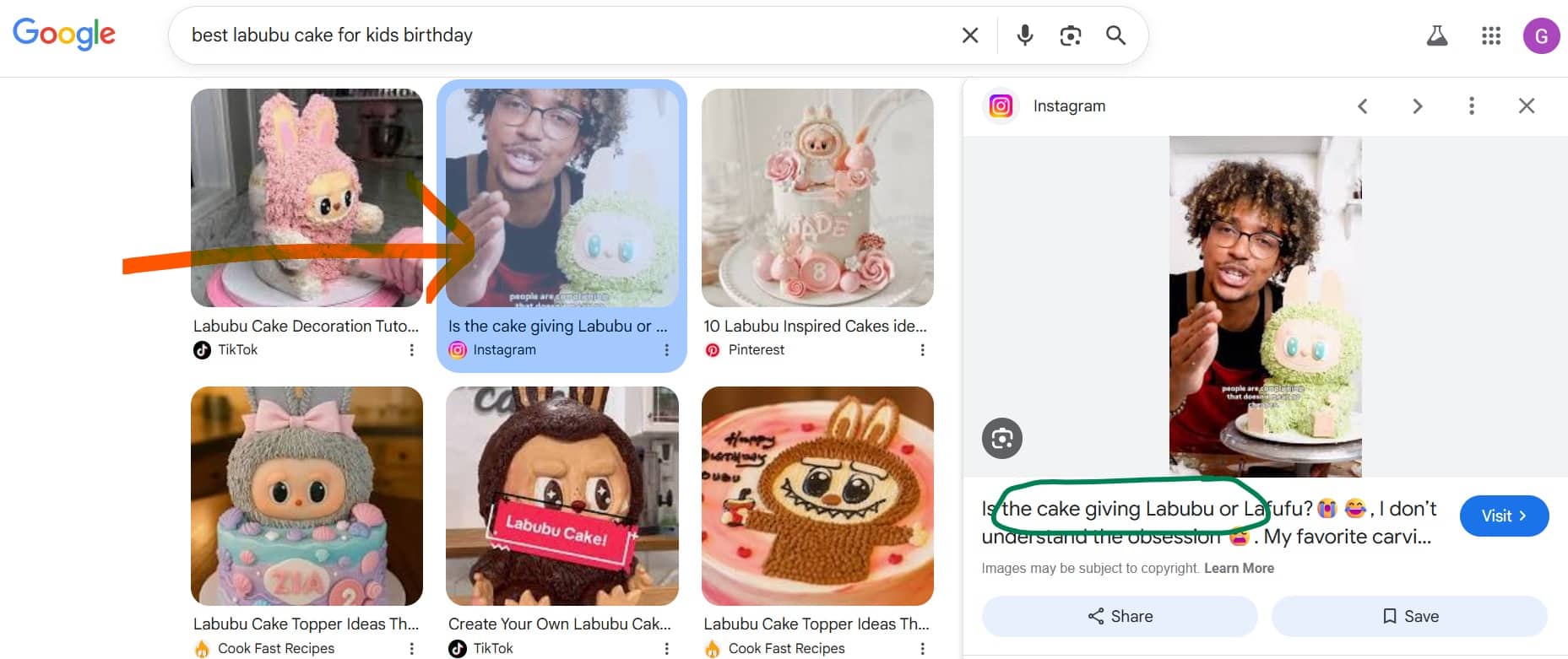Google Can Now Index Instagram Posts: How Can Businesses Leverage This Opportunity

Table of Contents
ToggleInstagram is the world’s third most popular social media platform, with over 2 billion monthly active users as of early 2025 (source:Statista). According to BusinessDasher, more than 200 million businesses are active on Instagram, and 83% of users say the platform helps them discover new products and services. For many small businesses, Instagram acts as a digital storefront.
On July 10, 2025, Instagram began with allowing Google and other search engines to index the public posts from professional/business accounts. This means that Instagram content such as posts, reels, carousels, and videos can now be visible on Google Search results. While Instagram reels and posts have occasionally appeared on Google before, this update marks a deliberate shift. Instagram is now officially opening up more of its content to search engines, moving away from its earlier “walled garden” model where most content stayed inside the app’s ecosystem.

Source: Google Search
What does “Indexing” mean in simple terms?
When a piece of content is “indexed,” it means that a search engine like Google or Bing has discovered it, stored it in its database, and can show it in search results. For Instagram, this means that public posts from professional accounts are now accessible to Google’s bots, which can crawl and index them so they may appear in search results when someone looks for related topics. Please note, indexing your Instagram posts doesn’t guarantee that they will appear in search results every time someone searches for a related topic, but it does increase the chances of your content being seen outside the Instagram app.
Who does this change apply to?
This update only applies to professional accounts on Instagram. If you have a personal account or your posts are set to private, your content will not be indexed by Google or shown in search results. Only public posts from business, creator, or professional accounts are eligible to appear on Google.
By default, Instagram is turning this feature on for professional accounts. This means your public posts, reels, carousels, and videos may start appearing in search results automatically.
If you have a professional account but don’t want your content to be shown on Google, you can opt out. Here are the simple steps:-
- Log in to your Instagram account
- Go to Settings
- Tap on Account Privacy
- Turn off the setting that allows your public photos and videos to appear in search engine results
Hence, giving businesses the choice to stay visible or keep their content limited to the Instagram app.

Source: Instagram Account
Why this matters for your business
Instagram is a strong marketing platform at the top of the marketing funnel, where people discover new brands, and get inspired. It’s a space driven by discovery and impulse. Google search on the other hand is a strong contributor in the bottom of the funnel, where users search with clear intent while finding a service, comparing products, or making a purchase decision.
With this change, the whole dynamics of Instagram content is evolving. This shift brings together two powerful stages of the funnel; discovery and intent.
Here’s how this actually benefits your business or personal brand:

- Broader visibility horizon: Instagram content has typically been discovered by people who follow your account or search within the app. With Google now indexing public posts, your content can appear in search results even for users who aren’t on Instagram. This expands your reach to a much wider audience.
- Content’s shelf life increases: Instagram posts tend to lose traction after a day or two. But once indexed on Google, your content can continue driving visibility for weeks or even months, acting more like an evergreen content.
- Organic reach with search intent: Your content now has the opportunity to show up naturally, when someone is actively searching for something you offer. This can help you reduce your spends on boosting posts for more visibility in the Instagram ecosystem.
For businesses and creators, this change is perceived as a structural shift that will add a new meaning to each content piece they create on Instagram!
SEO your Instagram posts (How to get them on Google)
This change marks the beginning of what we might call “Instagram SEO.” For businesses and content creators, this presents a unique opportunity to have their Instagram posts act like micro-landing pages on Google search results. This is especially valuable for small businesses that rely heavily on Instagram for marketing. For example, a boutique clothing store or a local salon that may not have a robust website can now enjoy the possibility of their Instagram posts appearing in Google searches. This means their well crafted Instagram content can reach a much wider and relevant audience.
Now, let’s dive into how you can optimise your Instagram posts for SEO to fully leverage this opportunity.
- Start with keyword analysis: Understand the user intent and what they are searching for on Google. For example, if you run a local bakery, relevant keywords might include “bakery near me,” or “custom cake shop in “city name” or even a long tail query like “best labubu cakes for kids birthday”
- Optimize your Instagram bio: Make sure it naturally includes relevant keywords and aligns with your other online profiles to create consistency.
- Ensure your profile is public: Double-check that you haven’t opted out of the indexing update so your content can appear in Google searches.
- Use keywords in captions and hashtags: Integrate relevant keywords naturally into your captions and hashtags to increase your chances of showing up in search results. For instance, in the screenshot below, Google ranks an Instagram post for the keyword- labubu cake for kids birthday, the image text and hashtags are aligned with the user intent:

Source: Google search
- Generate content that addresses user query: Consider creating informative content like quick guides or tutorials. For example, a skincare brand could post a short tutorial on how to build a basic skincare routine. Such posts not only engage an Instagram user but are more likely to rank well on Google.
This update is not only useful for new posts. It also gives businesses a chance to make use of older content already shared on Instagram.Many brands have been posting for years, building a valuable collection of content. By optimising them with search-driven captions, hashtags, or alt text, posts may start getting traction on Google. Businesses with a large volume of posts, can consider working with a professional SEO outsourcing agency to run an audit and help them optimise older content that they have been building for years but has gone into oblivion.
Where things can go wrong: Pitfalls to keep in mind
While this update brings a big opportunity, it’s important to make the most of it without compromising engagement or authenticity on Instagram. Optimising your posts for Google doesn’t mean keywords stuffing. If you try to force too many search terms into your captions, it may affect the post’s quality and how people interact with it. Instead, focus on user intent, what people are genuinely looking for and create content that answers that in a natural, organic way. If your posts are relevant, and authentic, they would have a strong probability of getting visibility on Google.
Make the most of this new opportunity
This update marks a new milestone for businesses and creators using Instagram. For the first time, your content can now reach the right eyeballs via search engines. This is a chance to take the first-mover advantage, get in front of new and more targeted audiences, and give your existing content a second life beyond Instagram. But while exploring this opportunity, ensure to focus on authenticity, create posts that offer value, keeping user experience as your centerpoint. Focus on giving a good experience to your audience; both on Instagram and in search.
We welcome all our readers to feel free to reach our team at Growth Accelerators for their Instagram content audit.
Happy Marketing!
This article was originally published on my LinkedIn. Shared it here for our website visitors.
Author
-
Monisha Agarwal, CEO of Growth Accelerators, has 17 years of digital marketing experience. Passionate about organic marketing, she shares real-world insights and everyday learnings through her writing.
View all posts



